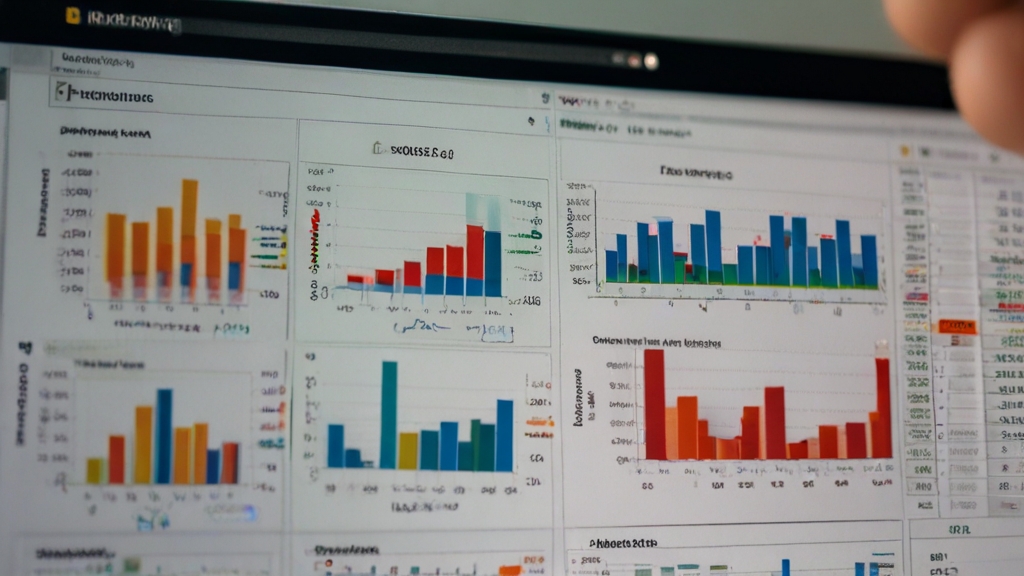Demystifying the Net Present Value (NPV) Method
The NPV method is a sophisticated financial analysis tool used to evaluate the profitability of an investment project. It's particularly realistic because it considers the time value of money, showing us the worth of future earnings in today's terms.
What is the NPV Method?
The NPV method discounts future cash flows to present value using a discount rate, which reflects the risk and time value of money. The formula for NPV is:
NPV = Σ (Cash flow in year t / (1 + r)^t) - Initial Investment
where r is the discount rate and t is the year.
Calculating NPV for the IB Exam
In the IB exam, you'll be expected to calculate NPV using provided data. You'll discount future cash flows to their present values and subtract the initial investment. A positive NPV indicates a profitable investment.
Real-Life Examples
Let's explore five real-life examples to illustrate the NPV method:
Example 1: Real Estate Investment
A developer is considering building a new apartment complex. The project requires an initial investment of $1 million with expected cash inflows over five years. Using a discount rate of 8%, the NPV calculation shows the project is profitable.
Example 2: Manufacturing Expansion
A manufacturing firm plans to invest in new machinery costing $500,000, expecting to increase cash flows by $125,000 annually for six years. With a 10% discount rate, the NPV is positive, making it a sound investment.
Example 3: Tech Start-up Investment
An investor is evaluating a tech start-up seeking $200,000 for a 10% stake. Projected cash flows suggest a high return over three years. Discounting these at 12%, the NPV analysis supports the investment.
Example 4: Oil Exploration Projects
An oil company is assessing the viability of an exploration project with an upfront cost of $2 million. Expected cash flows over a decade, discounted at 15%, reveal a high NPV, indicating potential for substantial profits.
Example 5: New Product Development
A consumer goods company is considering developing a new product line. The project requires $750,000 with anticipated returns over four years. An NPV calculation with a 9% discount rate confirms the project's feasibility.
Conclusion
Understanding and applying the NPV method is crucial for making informed investment decisions. It's a valuable skill for IB Business Management students, providing a realistic approach to evaluating the time-adjusted profitability of projects.
The NPV method is very realistic, as it makes use of discount tables which show us how much the future earnings are worth in today’s terms. So, this method makes use of the discounted cash flow, instead of the net cash flow we used in the previous 2 methods. Thus, it shows the effect of time on the rate of return of an investment project.
How do I calculate and present it in the exam?
Table 3.3: NPV for project A at 20% discount rate ($000)
| Yera | Net Cash flow | Present value |
| 0 | (20) | (20) |
| 1 | 5 | 5 × 0.83 = 4.15 |
| 2 | 8 | 8 × 0.69 = 5.52 |
| 3 | 10 | 10 × 0.58 = 5.8 |
| 4 | 12 | 12 × 0.48 = 5.76 |
| Present Values | 4.15 + 5.52 + 5.8 + 5.76 = 21.23 | |
| Net present value (NPV) | 21.23 − 20 = 1.23 | |
Net present value (NPV) = ∑Present values of return − Original cost
What do all these numbers mean?
The case study will tell you what discount rate to use (all the discount values will be provided in your formula booklet). So, what you need to do is multiply every year’s net cash flow with the number from the discount table. After doing that, we sum up all the values and we get the present value of the predicted net cash flow for every year. Finally, to find the NVP, subtract the value of the investment from the present value cash flow.
If we used this method to appraise different investment projects, we would choose the investment with the highest NPV.
| Advantages | Disadvantages | |
| Payback period | ✔ Simple, cheap, not time consuming. ✔ Indicates when the investment will be paid off. | ✔ Ignores the profitability of a project. ✔ Does not take into account figures for net cash flow. |
| ARR | ✔ Clearly shows the profitability of the project. ✔ More realistic. | ✔ All the figures for net cash flow are predicted. ✔ Ignores the time dimension. ✔ Does not take the effect of time on the value of money into account. |
| NPV | ✔ Very realistic. | ✔ All the figures for net cash flow are predicted.
✔ Ignores the time dimension. ✔ Calculating is the most complex. |
Net Present Value (NPV) FAQs
What is Net Present Value (NPV)?
Net Present Value (NPV) is a financial metric used in capital budgeting to evaluate the profitability of a potential investment or project. It calculates the difference between the present value of all future cash inflows from a project and the present value of all cash outflows (including the initial investment) over its expected life. In simple terms, it tells you if a project is expected to generate more value (in today's dollars) than it costs.
How is Net Present Value (NPV) calculated? What is the formula?
The NPV is calculated by discounting each future cash flow (both positive and negative) back to its present value using a required rate of return (or discount rate) and then summing these present values, including the initial investment (which is usually a cash outflow at time zero).
The general formula is:
NPV = Σ [Cash Flowt ÷ (1 + r)t] - Initial Investment
- Σ means "sum of"
- Cash Flowt is the cash flow in period 't'
- r is the discount rate (required rate of return)
- t is the period number (e.g., 1, 2, 3, ...)
- Initial Investment is the cash flow at time t=0 (often negative)
Most financial calculators and spreadsheet software (like Excel's `NPV` or `XNPV` functions) can compute this efficiently.
How do you interpret the Net Present Value (NPV) result?
The interpretation of the NPV result is straightforward and is a primary decision rule in capital budgeting:
- **If NPV > 0 (Positive NPV):** The project is expected to generate more cash flow than is required to recover the initial investment and meet the required rate of return. The project is considered financially viable and should be accepted (assuming no mutually exclusive alternatives are better).
- **If NPV < 0 (Negative NPV):** The project is expected to generate less cash flow than needed to recover the initial investment and meet the required rate of return. The project is not financially viable under these assumptions and should be rejected.
- **If NPV = 0:** The project is expected to generate exactly the required rate of return. The business would be indifferent between accepting or rejecting the project based purely on NPV, though other qualitative factors might influence the decision.
Why is Net Present Value used, and what are its benefits?
NPV is considered a robust and widely used method for investment appraisal because:
- **Accounts for Time Value of Money:** It correctly recognizes that money received in the future is worth less than money received today due to inflation and opportunity cost.
- **Considers All Cash Flows:** It includes all relevant cash inflows and outflows over the project's entire life.
- **Provides a Clear Decision Rule:** The positive/negative NPV result gives a clear indication of whether a project adds value to the company.
- **Consistency:** It aligns with the goal of maximizing shareholder wealth.
What are the key assumptions in NPV analysis?
Key assumptions underlying NPV analysis include:
- **Predictable Cash Flows:** Future cash inflows and outflows can be accurately estimated.
- **Constant Discount Rate:** The discount rate (required rate of return) remains constant over the project's life (or changes are predictable).
- **Reinvestment Rate:** Cash flows are assumed to be reinvested at the discount rate.
- **Capital Market Efficiency:** The discount rate accurately reflects the risk of the project in the capital markets.
The accuracy of the NPV heavily relies on the quality of the cash flow forecasts and the chosen discount rate.






